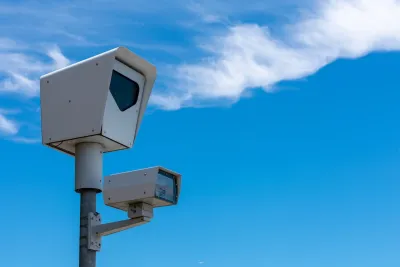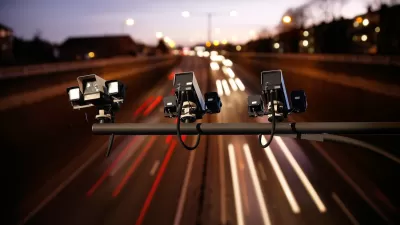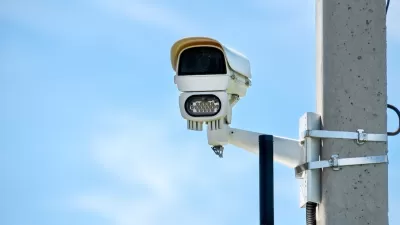Countering claims made by the Chicago Tribune that automated enforcement doesn’t improve safety, Streetsblog Chicago lays out the data showing how traffic safety fared in camera zones.

Automated traffic enforcement cameras are not a steady, permanent source of revenue for cities — nor should they be, argues John Greenfield in Streetsblog Chicago.
Addressing claims that speed cameras are simply a cash grab for the city, Greenfield notes that “These installations shouldn't be expected to produce a steady stream of ticket money that never declines. Instead, the number of fines issued by a particular camera should get smaller, as more motorists realize that if they drive dangerously near them, they'll have to pay a price.”
In a perfect world, the cameras would eventually issue zero tickets, because motorists would learn not to speed by more than 5 mph in their presence.
To ensure speeding tickets don’t amount to a regressive tax, Greenfield writes that the city could reinstate its prior policy of discounting speeding tickets for low-income residents.
When it comes to safety, claims that cameras don’t help seem to be unfounded. A Chicago study found that “Between 2012-2013 and 2022-2023, while the total number of crashes rose by 28 percent citywide, it only increased by 2 percent near the speed cameras.” At the same time, injuries and fatalities fell by 11 percent near cameras. Bicycle and pedestrian collisions dropped by a dramatic 46 percent near cameras.
Ultimately, Greenfield asks, “Is it really such a virulent imposition on motorists to ask them not to drive at speeds that can easily kill other road users, or themselves?”

Study: Maui’s Plan to Convert Vacation Rentals to Long-Term Housing Could Cause Nearly $1 Billion Economic Loss
The plan would reduce visitor accommodation by 25,% resulting in 1,900 jobs lost.

North Texas Transit Leaders Tout Benefits of TOD for Growing Region
At a summit focused on transit-oriented development, policymakers discussed how North Texas’ expanded light rail system can serve as a tool for economic growth.

Why Should We Subsidize Public Transportation?
Many public transit agencies face financial stress due to rising costs, declining fare revenue, and declining subsidies. Transit advocates must provide a strong business case for increasing public transit funding.

How to Make US Trains Faster
Changes to boarding platforms and a switch to electric trains could improve U.S. passenger rail service without the added cost of high-speed rail.

Columbia’s Revitalized ‘Loop’ Is a Hub for Local Entrepreneurs
A focus on small businesses is helping a commercial corridor in Columbia, Missouri thrive.

Invasive Insect Threatens Minnesota’s Ash Forests
The Emerald Ash Borer is a rapidly spreading invasive pest threatening Minnesota’s ash trees, and homeowners are encouraged to plant diverse replacement species, avoid moving ash firewood, and monitor for signs of infestation.
Urban Design for Planners 1: Software Tools
This six-course series explores essential urban design concepts using open source software and equips planners with the tools they need to participate fully in the urban design process.
Planning for Universal Design
Learn the tools for implementing Universal Design in planning regulations.
City of Santa Clarita
Ascent Environmental
Institute for Housing and Urban Development Studies (IHS)
City of Grandview
Harvard GSD Executive Education
Toledo-Lucas County Plan Commissions
Salt Lake City
NYU Wagner Graduate School of Public Service





























